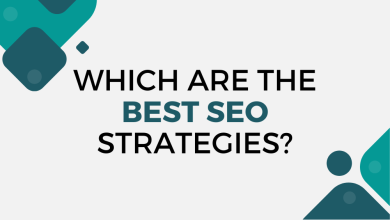What is a ranking factor on Google?

What is a ranking factor on Google?
Every website wants to be on the first page of Google, which is where most traffic comes from. Those who have a higher ranking will earn more money and grow their business.
Research has shown that Google ranks websites according to a multitude of factors. These factors are what ultimately lead to the success of a website and the amount of traffic it receives. The factors that matter most are your content, authority, and links.
How many Google ranking factors are there?
There are over 200 ranking factors that are generally considered correct (but again, it’s debatable). Since 2006, there have been thousands of algorithm updates.
With each update, SEOs test to see what’s changed. So, some of these factors are proven, but others are just speculation.
All 200 (Known) Ranking Factors
I will try to tell you all the 200 ranking factors which are used by google to rank any keywords in the search engine.
Here are the top categories:
- Domain Factors
- Page-Level Factors
- Site-Level Factors
- Backlink Factors
- User Interaction
- Special Google Algorithm Rules
- Brand Signals
- On-Site Webspam Factors
- Off-Site Webspam Factors
Domain Factors
Domain factors are all ranking factors that connect with your domain (the basic example.com version of your website), including:
- Your domain age
- Keyword in your domain
- Keyword is the first word in your domain
- Domain registration length
- Keyword in subdomain
- Domain history
- Penalized Whois owner
- Public WhoIs instead of private Whois
Page-Level Factors
Page-level factors are factors on each page that you can optimize, such as:
- Presence of the keyword in the title tag
- Having the keyword at the beginning of your title tag
- Keyword in your meta description tag
- Presence of the keyword in the H1 tag
- Keyword is frequently used in the content
- Content length
- Word count rankings
- Presence of a linked table of contents
- Keyword density
- Presence of semantically related keywords
- Semantically related keyword in meta title and description
- In-depth quality content
- Useful content
- Page loading speed via HTML
- Page loading speed tested on Chrome
- Core web vitals
- No duplicate content on the same site
- Image optimization through ALT, title, and file name
- Content recency (the newer, the better)
- Page age
- How many edits were made to the content during updates
- Historical data on page updates
- Proper use of rel=canonical
- Presence of keyword in H2 and H3 tags
- Presence of keyword in the first 100 words
- Grammar and spelling
- Originality of the page’s content
- Entity match
- Number of outbound links
- Mobile useability and optimization
- Hidden content on mobile (may not be indexed)
- Page optimized for mobile
- Presence of multimedia, for example, images and videos
- Number of outbound links
- The quality of outbound links
- Theme of outbound links
- Presence of helpful supplementary content, like free tools and calculators
- Content hidden behind tabs (it may not be indexed and wouldn’t show up in search snippets)
- Number of internal links pointing to the page
- Quality of the internal links
- Presence of too many broken links (could lower ranking capabilities)
- The reading level of the page
- Presence of many affiliate links
- Presence of many HTML errors
- Authority/trust-level of the domain
- Authority/trust level of the page
- PageRank
- Length of URL
- Closeness of URL to the homepage
- Presence of keyword in URL
- Opinion of human editors
- Relevance of page’s category to page
- Content formatting for user-friendliness and readability
- Priority of the page in the sitemap.xml
- UX signal from pages ranking for the same keyword
- Citing references and sources
- Use of a user-friendly layout
- URL string in Google search engine results
- Internal link anchor text to the page
- Use of structured data
Site-level factors
Site-level factors go above the page level and take a look at things on the entire site. They include:
- Presence of a contact us page or appropriate amount of contact information
- Content on site provides value or new insights
- TrustRank (how close your site is to a known and trusted site in terms of linking)
- Website updates for freshness factor
- Site architecture
- Presence of a sitemap
- Long-term site downtime
- Location of server
- HTTPs / use of a valid SSL certificate
- Presence of legal pages (terms and conditions and privacy policy)
- Unique metadata
- Use of breadcrumb markup
- Site-wide mobile optimization
- Site-wide user-friendliness (usability and interactiveness)
- Bounce rate
- Domain authority
- User reviews
- Site reputation
Backlink factors
Backlink factors look at the sites that are linking to you to determine where to rank your page. Sites with better quality sites linking to them tend to be higher in rankings when they have quality content. The backlink factors are as follows:
- Age of linking domain
- Number of referring domains
- Number of links from separate c-class IPs
- Number of referring pages
- Anchor text of backlinks
- ALT tag of image links
- Number of links from .edu and .gov domains
- Trust factor of linking page
- Trust factor of linking domain
- Presence of links from competitors
- Number of links from expected sites in your industry
- Links from bad neighborhoods
- Number of links that are not from ads
- Country TLD of referring domains
- Domain authority
- Presence of some nofollow links
- Diversity of link profile
- Context of content the content of linking page
- Presence of more follow links that sponsored or UGC
- Lots of backlinks to URL with 301 redirects
- The text that appears when you hover over a link
- Link location on page
- Location of link in content
- Links from relevant domains
- Links from relevant pages
- Presence of your page’s keyword in the title of the linking page
- Natural rate of growth in number of links
- Spiky and unnatural rate of growth in number of links
- Links from top resources on a certain topic or hubs
- Number of links from sites that are considered authority sites
- Linked as a source in a Wikipedia article
- Words around your backlinks
- Backlink age
- Links from real sites vs fake blogs
- Natural link profile
- Excessive reciprocal links
- Links in real content vs. UGC
- Backlinks from a page with a 301 redirect
- TrustRank of linking site
- Fewer outbound links on linking page
- Links in real content vs links in forums
- Word count of linking content
- Quality of linking content
- Sitewide links = one link
User Interaction
Google always emphasizes in their update announcements how important it is to provide an excellent user experience to website visitors. These factors measure user interaction to rank your page accordingly, including:
- Organic click through rate for exact keyword
- Organic click through rates for all ranking keywords
- Dwell time
- Bounce rate
- Measurement of how users interact on your site based on RankBrain
- Total direct traffic
- Percentage of repeat visitors
- Blocked sites
- Percentage of visitors that click on other pages on the SERP after clicking visiting your page
- Page frequently bookmarked by Chrome users
- Number of comments on page
Special Google Algorithm Rules
Some Google Algorithm rules are not directly connected to your page or domain. They include factors that look at personalizing search results for the user or better search results as a whole. Here are some of them:
- Need for diversity in the SERP
- Need for freshness in the SERP
- Browsing history of user
- Search history of user
- Succinct answers, formatting, page authority and HTTPS for featured snippets
- Geo-targeting
- Adult content or curse words (excluded from safe search results)
- High content quality standards for YMYL keywords
- Legitimate DMCA complaints
- Need for domain diversity in SERP
- Transactional searches
- Local search results
- Presence of news stories related to keyword for Top Stories box
- Search intent
- Presence of big brands with relevant content (they are often ranked higher)
- Presence of results optimized for Google Shopping
- Image results
- Branded search
- Easter eggs and April Fools’ Day jokes and hoaxes from Google (this one makes me laugh)
- Spammy queries
- Spammy sites
Brand Signals
How great is your branding strategy in terms of SEO? If you haven’t taken care of your brand mentions and brand all over the internet, you need to start now. Because there are some serious ranking factors related to your brand:
- Brand + keyword searches (for example, Hubspot SEO)
- Branded anchor text
- Twitter profile with followers
- Official LinkedIn page
- Facebook page with lots of likes
- Branded searches
- Known author or verified online profile
- Real social media accounts
- Top stories with brand mentions
- Brand mentions without links
- Physical location of offices
On-site Web
To rank high on search engine results, you need to ensure your site isn’t spammy and doesn’t look spammy – as with many things in life, looks play a role in how we’re perceived. Here are some factors around that:
- Low-quality content
- Links to bad neighborhoods
- Multiple and sneaky redirects
- Flagged server IP address
- Distracting ads and popups
- Popups that are spammy and difficult to close
- Over-optimizing the site
- Gibberish content
- Use of doorway pages
- Lots of ads above the fold and not much content
- Hiding affiliate links
- Low-value content sites
- Affiliate sites
- Keyword stuffing in meta tags
- Compute generated content
- Nofollowing all outbound links
Off-site Webspam Factors
The Off-site webspam factors affect spam based on what’s done outside your website that connects with your website. They include:
- Unnatural and sudden increase in backlinks
- Hacked site
- Lots of low-quality backlinks
- High percentage of links from unrelated websites
- Low-quality directory links
- Automatic links in widgets
- Links from sites with the same server IP
- Using “poison” in your anchor text
- Ignored manual actions in search console
- Selling links
- Temporary link schemes
Resource links:
https://blog.hubspot.com/marketing/google-ranking-algorithm-infographic





